Nestled in the heart of Jaipur, the Anokhi Museum is a unique destination dedicated to preserving the ancient art of hand-block printing. This museum offers an insightful journey into traditional Indian textiles, showcasing the intricate craftsmanship that has been passed down through generations. For those with a love for art, history, or sustainable fashion, the Anokhi Museum is a must-visit spot to explore the vibrant world of block printing in Rajasthan.
Location Of Anokhi Museum
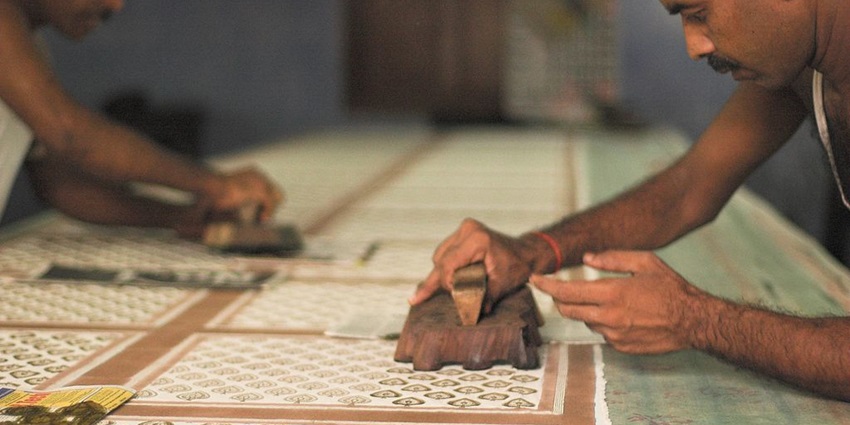
Photo: Ketayun, Katz / Wikimedia Commons
The Anokhi Museum is located in the Amber region of Jaipur, Rajasthan, near the famed Amber Fort. Housed in a beautifully restored haveli (mansion), the museum itself is a testament to Jaipur’s rich heritage. The peaceful surroundings and stunning views of the fort and hills make it an ideal location to learn about India’s artistic past. The museum is easily accessible by car or public transport from central Jaipur.
Suggested Read: Exploring Jaipur Museums
How To Reach Anokhi Museum

Photo: Brett Sayles / Pexels / Image For Representation Only
By Road: The museum is around 11 km from Jaipur city centre and can be reached via taxis, autorickshaws, or private cars. The roads leading to the museum are well maintained, making it a convenient option for visitors.
By Rail: Jaipur Railway Station is the nearest station, about 15 km away. From the station, visitors can take taxis or auto rickshaws to reach the museum.
By Air: The nearest airport is Jaipur International Airport, approximately 25 km away. From the airport, one can hire a cab or take public transportation to the museum.
Places To Visit In And Around Anokhi Museum
Uncover the artistic charm of the Anokhi Museum and its surroundings, where tradition and creativity thrive. From vibrant markets to historical sites, here are the must-visit places that enhance your experience in this culturally rich area.
1. Amber Fort
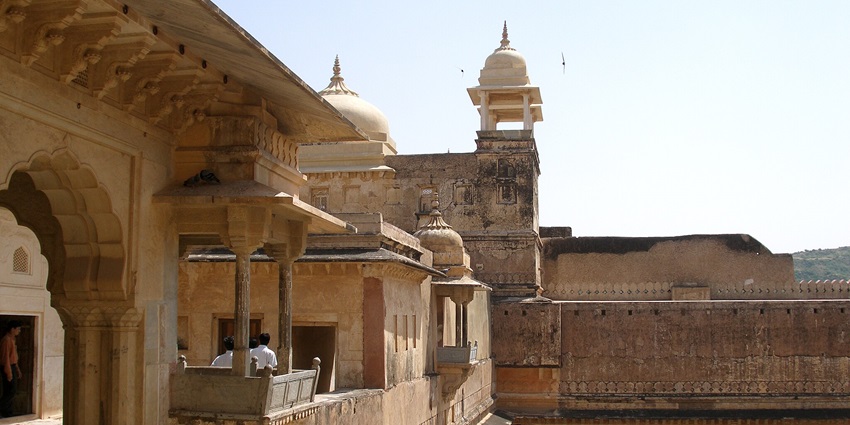
Photo: Vyacheslav Argenberg / Wikimedia Commons
Amber Fort, built by Raja Man Singh in 1592, is a UNESCO World Heritage site. The fort’s artistic style blends both Hindu and Rajput elements, making it one of the most famous forts in India. The Sheesh Mahal (Mirror Palace), a room embedded with thousands of small mirrors, is one of its most striking features. The fort also has a spectacular light and sound show in the evenings that narrates its rich history. Elephant rides to the top of the fort are a popular attraction among tourists.
Timings: 8 AM – 5:30 PM
Entry Fee: ₹100 for Indians, ₹500 for foreign nationals
Suggested Read: Amber Fort Elephant Ride
2. Jaigarh Fort
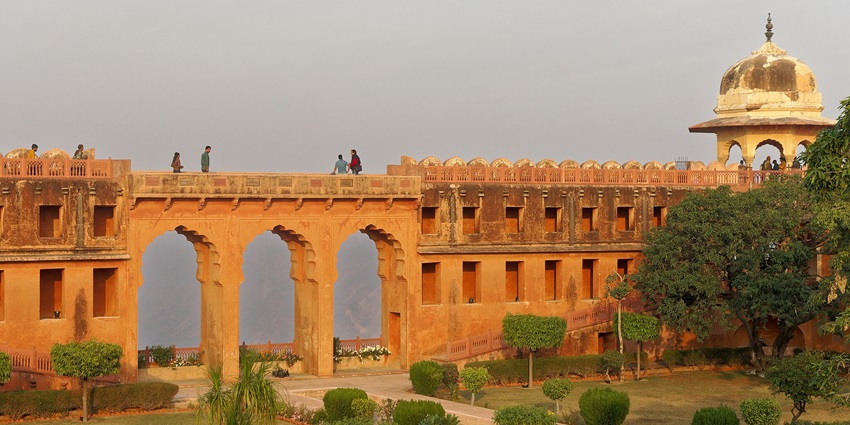
Photo: Jakub Halun / Wikimedia Commons
Jaigarh Fort, also known as the “Fort of Victory,” was built in 1726 by Maharaja Jai Singh II to protect Amber Fort and its palace. Unlike many forts, which were built for grandeur, Jaigarh was constructed primarily for military purposes. Inside the fort, you can explore an armoury museum showcasing ancient weapons and cannons. The fort’s water harvesting system is another engineering marvel, as it provided a sustainable solution to the region’s water scarcity. The fort’s underground passages connect it to Amber Fort, offering a fascinating glimpse into the military tactics of the time.
Timings: 9 AM – 4:30 PM
Entry Fee: ₹35 for Indians, ₹85 for foreign nationals
3. Nahargarh Fort
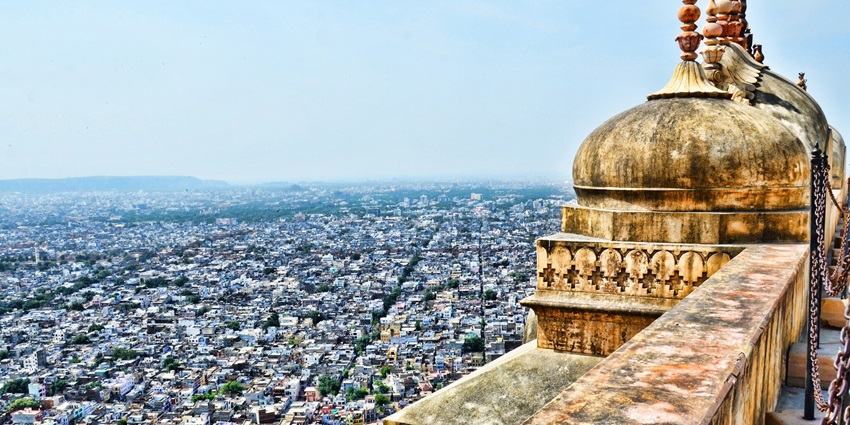
Photo: Aman.arch / Wikimedia Commons
Nahargarh Fort, meaning “Abode of Tigers,” was built in 1734 by Maharaja Sawai Jai Singh II as a retreat for the royal family. Its unique Indo-European architecture features several suites for the king’s queens, each connected to the king’s suite by corridors. The fort also has an open-air restaurant that offers a picturesque view of the city at sunset. For history buffs, the Madhavendra Bhawan palace inside the fort is worth visiting, showcasing murals and art pieces from the royal era.
Timings: 10 AM – 10 PM
Entry Fee: ₹50 for Indians, ₹200 for foreign nationals
Suggested Read: Sheesh Mahal Nahargarh Fort
4. Jal Mahal
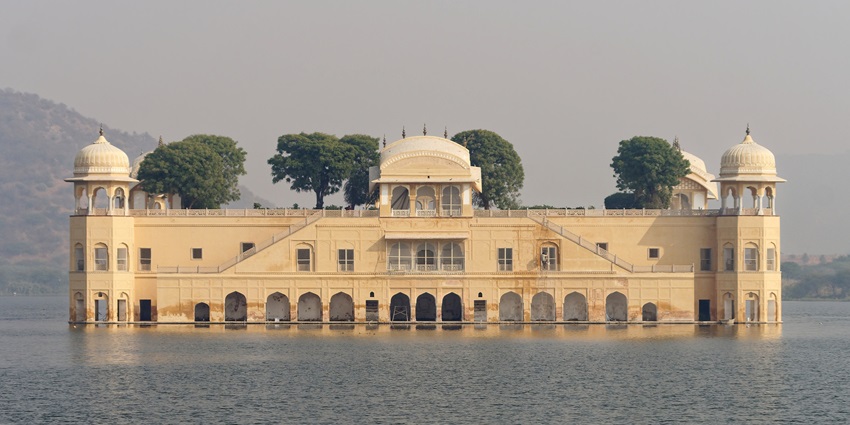
Photo: Photo: Jakub Hałun / Wikimedia Commons
Jal Mahal, built in the 18th century, is a five-story palace, four of which remain submerged when the lake is full. While visitors are not allowed inside the palace, boat rides on the lake allow for a closer look. The surrounding Man Sagar Lake is home to various migratory birds, making it a tranquil spot for birdwatching. The palace is currently being restored to its former glory, and plans are in place to open it for public viewing in the future.
Timings: Can only be viewed from the outside, open 24/7
Entry Fee: Free (Boat rides available at a cost)
5. City Palace Jaipur
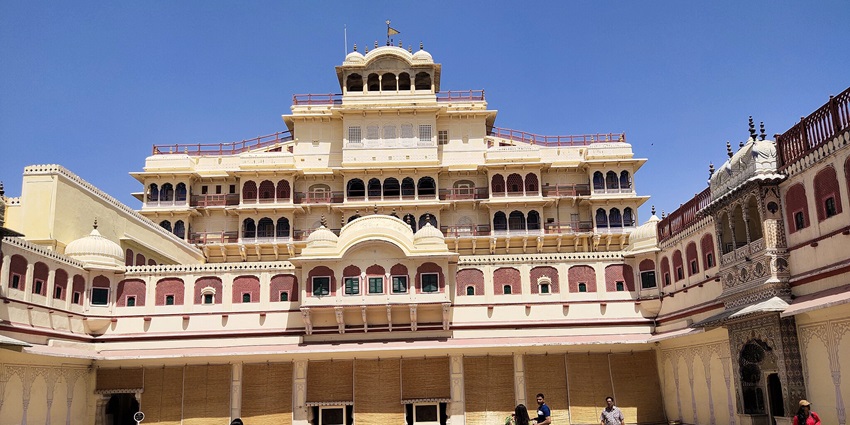
Photo: LIPIKA1704 / Wikimedia Commons
The City Palace was built by Maharaja Sawai Jai Singh II and remains a royal residence today. Spread across a large area, the complex consists of courtyards, gardens, and buildings like the Mubarak Mahal (museum of royal costumes and textiles) and Chandra Mahal (royal residence). The DiwaniKhas, a hall for private audiences, houses two of the largest sterling silver vessels in the world. The intricately designed Peacock Gate, representing autumn, is a highlight, showcasing Jaipur’s attention to artistry and detail.
Timings: 9:30 AM – 5 PM
Entry Fee: ₹200 for Indians, ₹700 for foreign nationals
Suggested Read: City Palace Museum In Jaipur
Where To Stay
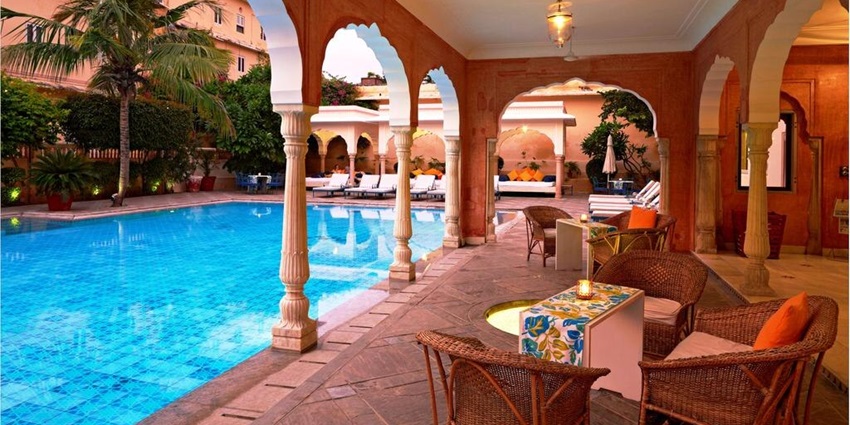
Photo: Pcrtravel / Wikimedia Commons
Jaipur offers a variety of accommodation options near the Anokhi Museum, ranging from budget hotels to luxurious heritage properties. For those seeking an authentic experience, staying in heritage havelis or boutique hotels near Amber Fort would add a traditional touch to your visit.
Where To Eat
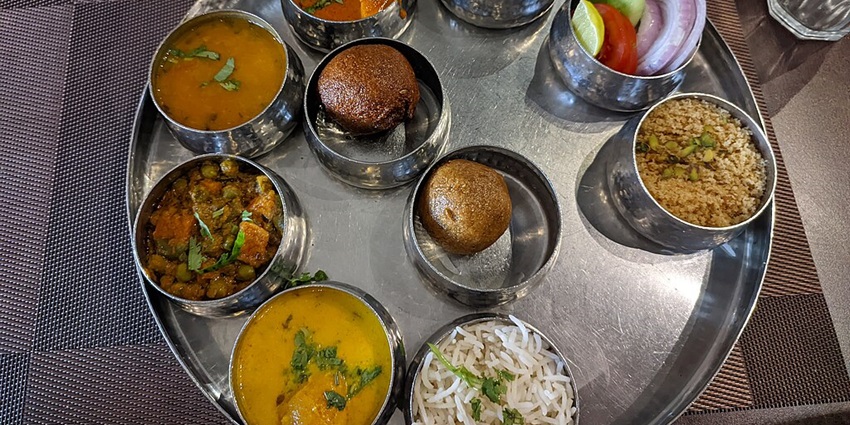
Photo: Kaapeine / Wikimedia Commons
There are several dining options around Amber Fort and in Jaipur city, ranging from local eateries to fine dining restaurants. Visitors can enjoy authentic Rajasthani cuisine at nearby restaurants like 1135 AD at Amber Fort or relish international dishes in Jaipur’s popular cafés.
Suggested Read: Best Food In Jaipur
Best Time To Visit Anokhi Museum
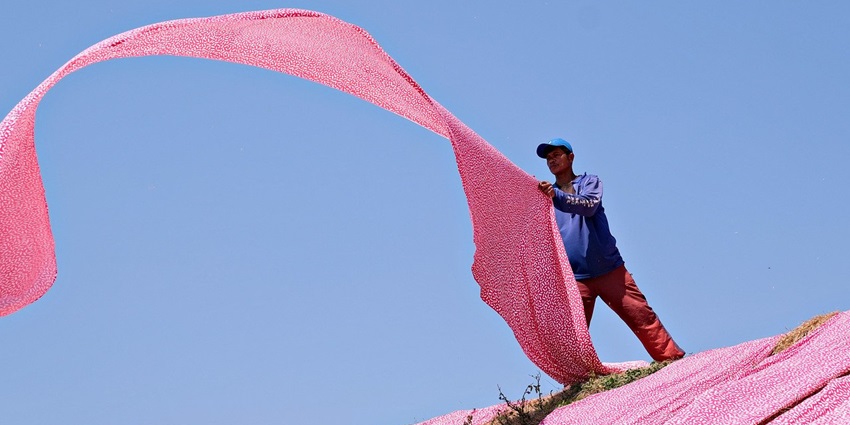
Photo: ignartonosbg / Pixabay / Image For Representation Only
The best time to visit the Anokhi Museum is between October and March when the weather in Jaipur is pleasant and perfect for sightseeing. The cooler temperatures make it easier to explore the city’s outdoor attractions, including Amber Fort and nearby tourist spots.
Other Factors To Consider
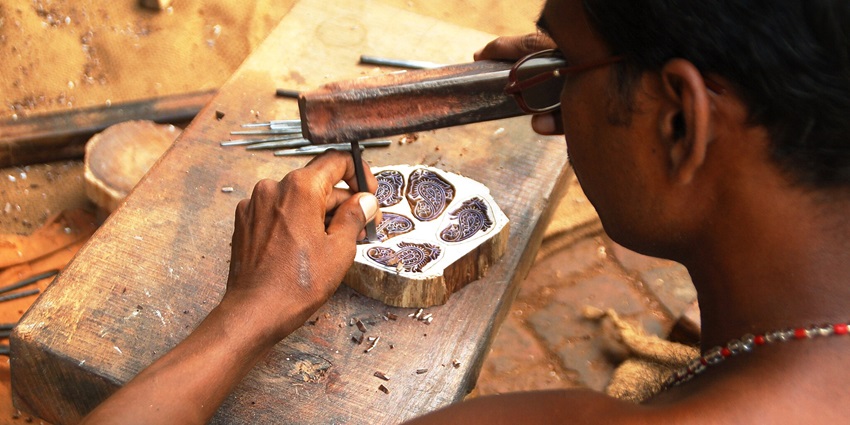
Photo: Ketayun, Katz / Wikimedia Commons
The average trip cost to Anokhi Museum, including transportation, meals, and Anokhi Museum entry fee for other attractions in the area, can cost between ₹1,500 to ₹3,000 per person, depending on accommodation and dining choices.
Travel Tips
- Jaipur can get quite warm during the day, so wear light clothing and comfortable shoes for walking.
- Some attractions, like Amber Fort, offer online booking, which can help avoid long queues.
- Although digital payments are common, smaller shops and local eateries might still prefer cash transactions.
Suggested Read: Rajasthan Museums
Anokhi Museum is not just a place to appreciate art but also a gateway to explore the rich cultural heritage of Jaipur. It offers visitors a rare opportunity to witness the preservation of traditional crafts, particularly handblock printing, which has been an integral part of India’s textile industry for centuries. Plan yourself a fantastic escape to Anokhi Museum with TripXL today!
Cover Photo: Ketayun, Katz / Wikimedia Commons


 WhatsApp
WhatsApp
 Twitter
Twitter









